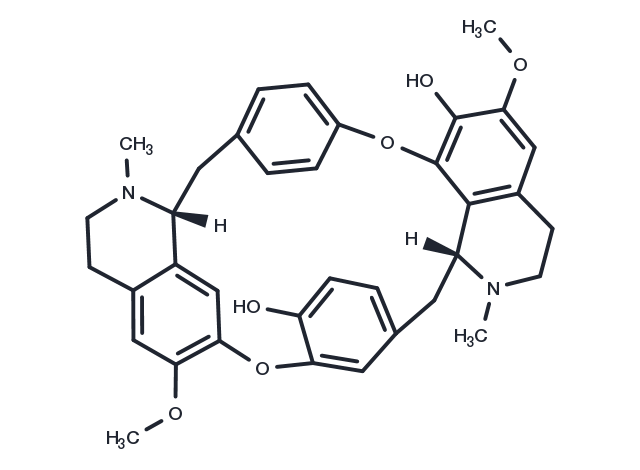Powder: -20°C for 3 years | In solvent: -80°C for 1 year


(-)-Curine can inhibit viability of hepatocellular carcinoma cells in regardless of p53 status.

| Pack Size | Availability | Price/USD | Quantity |
|---|---|---|---|
| 10 mg | Inquiry | $ 190.00 | |
| 1 mL * 10 mM (in DMSO) | Inquiry | $ 210.00 |
| Description | (-)-Curine can inhibit viability of hepatocellular carcinoma cells in regardless of p53 status. |
| In vitro | As in many other cancers, p53 mutations are commonly observed in HCCs (Hussain et al., 2007; Levine et al., 1994) [1,2]. Tumor tissues with mutant p53 seems to be more aggressive and resist to chemotherapy than that harboring wide-type p53 (Harris and Hollstein, 1994; Parrales and Iwakuma, 2015) [3,4]. (-)-Curine, a novel bisbenzylisoquinoline alkaloid, is one of the main components isolated from the roots of Cyclea wattii. Here, it was found to exert cytotoxity on hepatocellular carcinoma (HCC) cells regardless of p53 status. We found that (-)-Curine induced G1 arrest and cell death in HepG2 cells with wild-type p53 as well as Huh-7 cells with mutant p53. In HepG2 cells, knocking down of p53 did not change its cellular responses to (-)-Curine, and same degree of G1 arrest and cell death were occurred after p53 knockdown. |
| Source |
| Molecular Weight | 594.7 |
| Formula | C36H38N2O6 |
| CAS No. | 436-05-5 |
Powder: -20°C for 3 years | In solvent: -80°C for 1 year
You can also refer to dose conversion for different animals. More
bottom
Please see Inhibitor Handling Instructions for more frequently ask questions. Topics include: how to prepare stock solutions, how to store products, and cautions on cell-based assays & animal experiments, etc.
(-)-Curine 436-05-5 Apoptosis p53 ( ) Curine Curine ()Curine inhibitor inhibit
